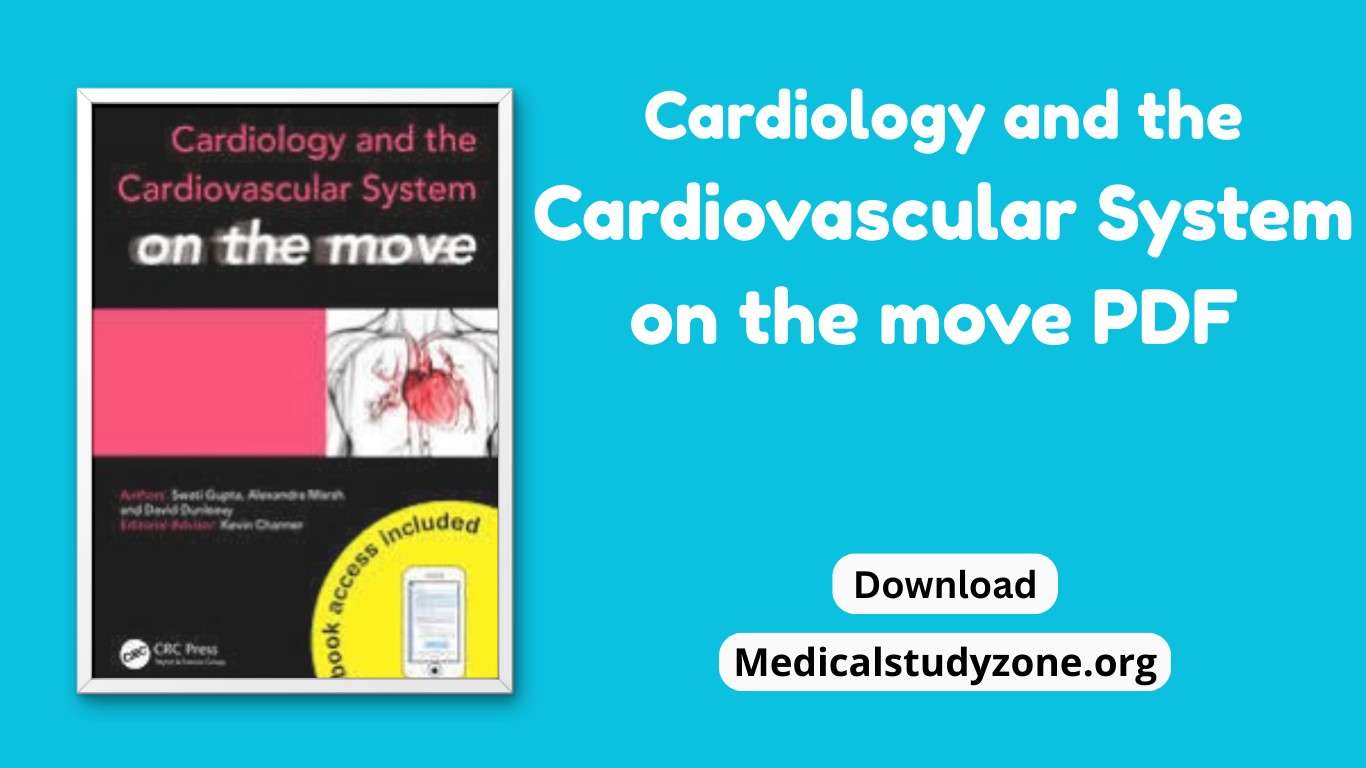Medical students know how challenging cardiology can be – from ECG waves to coronary anatomy. Cardiology and the Cardiovascular System on the Move is a concise, student-friendly guide designed to make cardiology manageable and even enjoyable. Part of the CRC Press “Medicine on the Move” series, this book offers fully-flexible access to cardiology topics, combining traditional print content with a mobile-friendly eBook. Written by medical students and junior doctors for students and juniors, it condenses the essentials into portable chapters with flowcharts, boxes, summary tables and colorful diagrams. In short, this cardo study guide is an ideal companion for med students – and best of all, you can download the free Cardiology and the Cardiovascular System on the Move PDF from MedicalStudyZone.org to carry it anywhere.
Key Features of the Book
- Concise, practical format: The book distills cardiology into bite-sized sections and clear visuals. As the authors note, it’s a “concise, practical guide” using charts, tables and diagrams to make complex topics easy to grasp.
- Created by students, for students: Uniquely, the content is written by recent medical students and junior doctors who “drew on [their] personal experience” to focus on exactly what beginners need.
- Visual learning: With 72 color illustrations, flowcharts, and color-coded summaries, the book caters to visual learners. Complex ideas like heart failure or valve disease are broken into diagrams and step-by-step boxes.
- Self-assessment tools: At the end of the text, Part II provides a full Q&A section (MCQs, EMQs and SBAs) for self-testing. This lets you check your understanding of every topic in a style like actual exams.
- Portable & digital: Slim enough to slip into a pocket, and available as a mobile eBook, this guide literally lets you learn cardiology anywhere. You can annotate the PDF on your tablet or phone – a huge plus for on-the-go review.
- Series continuity: As part of the “Medicine on the Move” series, this cardiology text is designed the same way as other popular revision guides in the series. If you like Medicine on the Move format, you’ll love this cardiology edition.
Chapters and Content Overview
Chapter 1 (p.5): A guide to cardiac history – Covers taking a heart-focused history (presenting complaint, past history, drug, family and social history).
Chapter 2 (p.9): A guide to cardiac examination – Step-by-step exam of the precordium and peripheral signs of heart disease.
Chapter 3 (p.15): Coronary artery disease (CAD) – Coronary anatomy, atherosclerosis, prevention, acute presentations (angina, MI), complications and long-term management.
Chapter 4 (p.47): Acute heart failure – Causes, symptoms, investigations and urgent management (including cardiogenic shock).
Chapter 5 (p.59): Chronic heart failure – Classification, pathophysiology, workup and outpatient management (including devices and surgery).
Chapter 6 (p.77): The myocardium – Heart muscle structure, myocarditis and cardiomyopathies.
Chapter 7 (p.89): Pericardial disease – Pericardial sac anatomy, acute pericarditis, effusion/tamponade and constrictive pericarditis.
Chapter 8 (p.99): The cardiac valves – Valve anatomy and disease, including endocarditis; detailed sections on aortic, mitral, tricuspid and pulmonary valves and replacement options.
Chapter 9 (p.119): Congenital heart disease – Fetal circulation, congenital defect types (cyanotic, obstructive, complex) and shunt lesions.
Chapter 10 (p.135): Hypertension – Measuring blood pressure and classification of hypertension.
Chapter 11 (p.145): Diseases of the aorta – Acute aortic dissection, aneurysm workup, and traumatic aortic injury.
Chapter 12 (p.155): A guide to ECG interpretation – Systematic approach to reading ECGs.
Chapter 13 (p.163): Bradycardia – Sinus node dysfunction, heart blocks and bundle branch blocks.
Chapter 14 (p.171): Tachycardias – Narrow- and broad-complex tachycardias, including SVT, VT, and cardiac arrest rhythms.
Chapter 15 (p.191): Cardiac pacemakers – Types of pacemakers, coding, indications and complications.
Chapter 16 (p.195): Cardiac imaging & investigations – Role of CXR, echo, CT, MRI, nuclear scans, angiography and electrophysiology in heart disease.
Chapter 17 (p.209): Cardiac pharmacology – Drug overview: anti-anginals, antihypertensives, antiarrhythmics, anticoagulants and antiplatelets.
Part II – Questions & Answers (p.239/241): MCQs, EMQs and SBAs for review (with answers).
Book Details and Download
| Detail | Information |
|---|---|
| Title | Cardiology and the Cardiovascular System on the Move PDF |
| Author/Editor | Swati Gupta, Alexander Marsh, David Dunleavy |
| Edition | Latest Edition |
| File Size | 21.3 MB |
| Pages | 288 |
| Subject | Clinical Cardiology, Cardiovascular Medicine |
| Download/Read | Available |
| Storage | Google Drive |
| Format | Free PDF |
Download or Read Cardiology and the CV System on the Move PDF Now
We do not claim copyright for any content shared. If you believe your copyright has been infringed, please contact us for removal.
This content is provided for educational purposes only. We encourage users to purchase original licensed books and materials.
For DMCA / removal requests, email us at [email protected].

